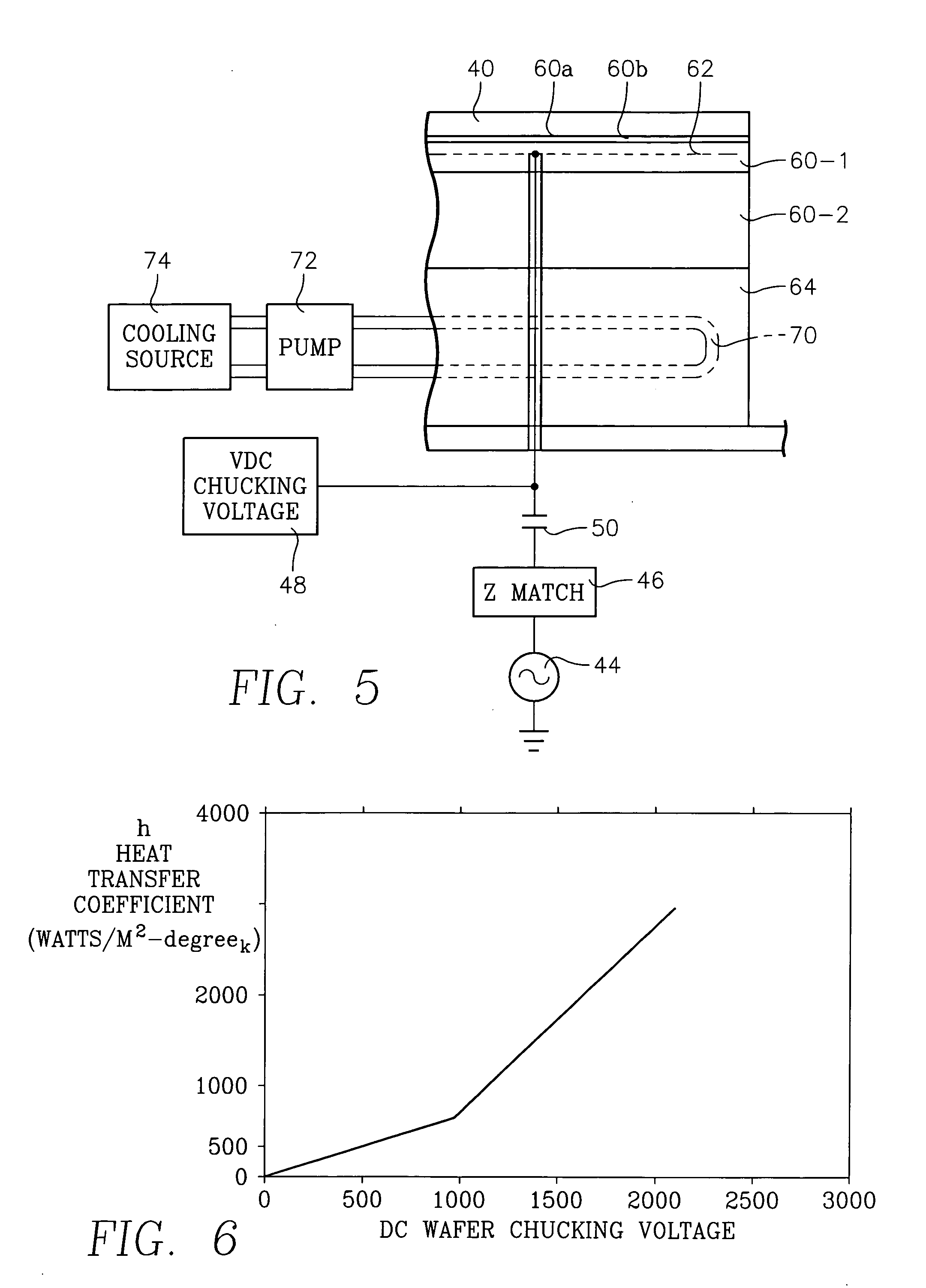Gasless high voltage high contact force wafer contact-cooling electrostatic chuck
- Summary
- Abstract
- Description
- Claims
- Application Information
AI Technical Summary
Benefits of technology
Problems solved by technology
Method used
Image
Examples
Embodiment Construction
[0032]FIGS. 1 through 4 depict a plasma reactor with the wafer contact-cooling electrostatic chuck in accordance with certain embodiments of the invention. FIG. 1 is a cut-away side view of a plasma reactor for processing a semiconductor reactor that includes the wafer contact-cooling electrostatic chuck. FIG. 2 is a cross-sectional side view of the wafer contact-cooling electrostatic chuck. FIGS. 3 and 4 are top cross-sectional views of different layers of the wafer contact-cooling electrostatic chuck. In FIG. 1, the plasma reactor has a cylindrical side wall 10, a ceiling 12 and a wafer contact-cooling electrostatic chuck 14. A pumping annulus 16 is defined between the chuck 14 and the sidewall 10. While the wafer contact-cooling electrostatic chuck 14 may be used in any type of plasma reactor or other reactor (such as thermal process reactor), the reactor in the example of FIG. 1 is of the type in which process gases can be introduced through a gas distribution plate 18 (or “show...
PUM
| Property | Measurement | Unit |
|---|---|---|
| Fraction | aaaaa | aaaaa |
| Fraction | aaaaa | aaaaa |
| Fraction | aaaaa | aaaaa |
Abstract
Description
Claims
Application Information
 Login to View More
Login to View More - R&D
- Intellectual Property
- Life Sciences
- Materials
- Tech Scout
- Unparalleled Data Quality
- Higher Quality Content
- 60% Fewer Hallucinations
Browse by: Latest US Patents, China's latest patents, Technical Efficacy Thesaurus, Application Domain, Technology Topic, Popular Technical Reports.
© 2025 PatSnap. All rights reserved.Legal|Privacy policy|Modern Slavery Act Transparency Statement|Sitemap|About US| Contact US: help@patsnap.com



